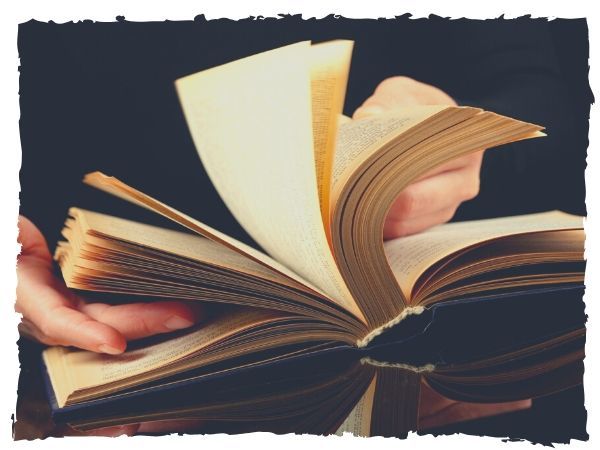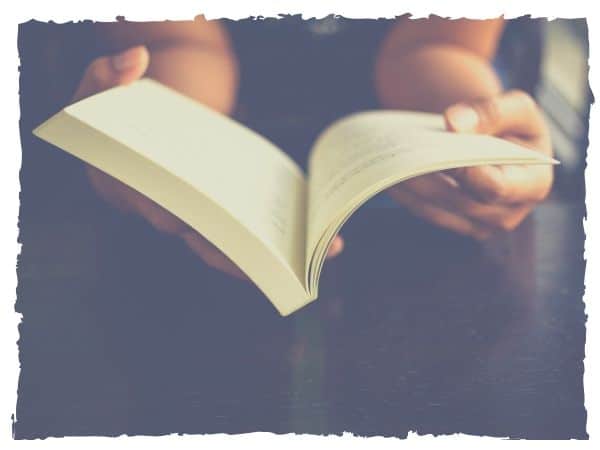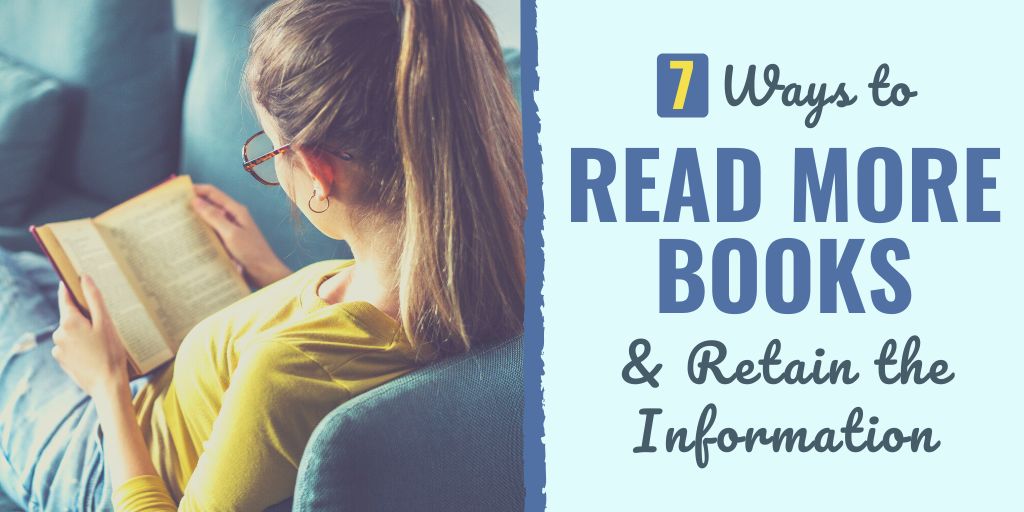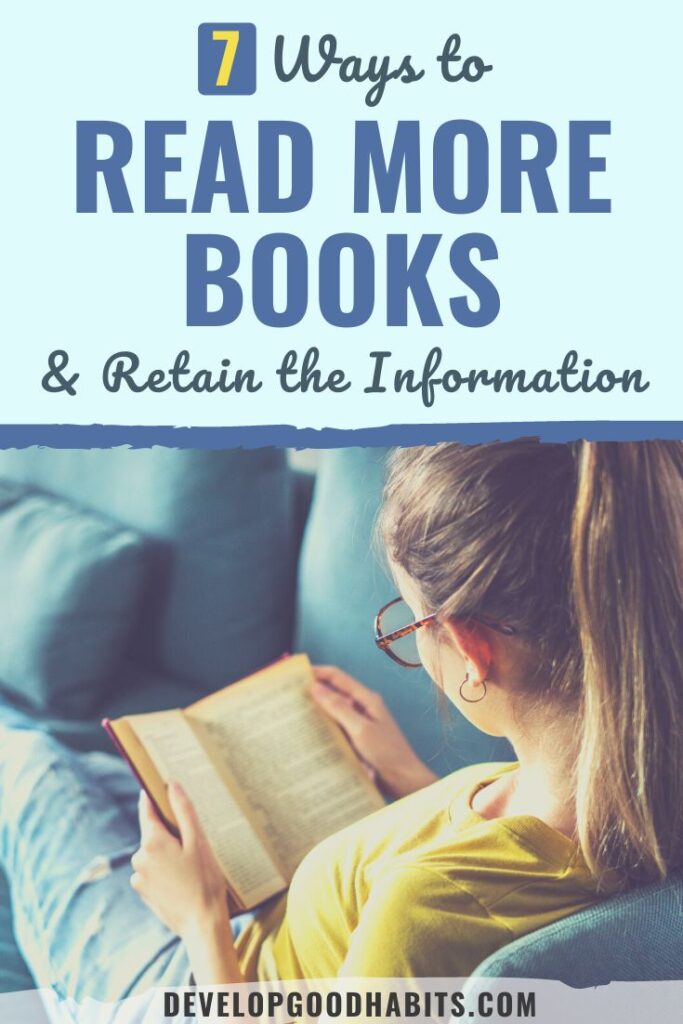There might be affiliate links on this page, which means we get a small commission of anything you buy. As an Amazon Associate we earn from qualifying purchases. Please do your own research before making any online purchase.
Growing up, I remember completing assigned readings for school without being able to recollect a single word or bit of information.
We would be told what to read, and I would scan the words, but my mind was always on something else. Reading definitely felt like homework, it felt like a chore.
But now that I’m an adult, I feel like I can’t get enough. Because I am able to choose what I want to read and I am interested in the material, reading is definitely more of a hobby now.
With the current ease of accessibility of reading materials, sometimes I don’t even know where to start–I want to read everything.
With that said, I often wonder how I can read more. I want to learn how to read more books and retain all the information.
Research has shown that, on average, adults read 17 books per year.
I certainly surpass this number and if you include journal articles, online material, and books that I only read portions of, there is quite a bit more material that I cover.
I am constantly seeking out new reading material because I have been able to experience the positive impact that reading has on my life every day through my conversations with other people and the stress relief that I feel when I’m in the middle of a good book.
Since we have already talked about the benefits of reading, you know how prioritizing this habit can help improve your life. However, you will only reap the benefits if you’re able to internalize and retain the lessons and insights you get from whatever you choose to read.
Your level of knowledge will only grow if you remember the information and you’re able to apply it in some way to your own life. So simply reading more books won’t make a difference unless you know how to get the most out of every book that you read.
In this article, I will share some tricks I have learned to read more books
Following these reading tips, I read more often, retain more information and gain a wider base of knowledge. Hopefully, you will be able to use these techniques to improve your own reading habits and acquire all the advantages that reading has to offer.
Let's get to it.
How to Read More Books and Actually Retain the Information
1. Don’t Hesitate to Quit a Book
I get it. I actually dislike quitting a book before I am done. It makes me feel incomplete.
But there is too much great material out there to waste your time finishing a book that isn’t worth reading.
You can quickly tell if a book doesn’t offer high-quality content or information that is relevant to your life.
If you get into a book and realize it isn’t providing you with any insights or new ideas or perspectives. Put it down without feeling a sense of shame or guilt.
There is no point in wasting your time reading something that won’t have an impact on your life, especially when there is so much out there that is worth your time.
But you can find some gray area here. If you come across a book that seems like it has bits and pieces that can be beneficial for you, it doesn’t necessarily mean that you need to read the entire book.
Flip through the book first to scan for headings, chapter titles, bolded points, and tables or graphs. Doing this can help you figure out if reading the entire book may be a good idea or if simply reading certain parts is all you really need to do.
You can also check out book summaries before committing to buying and reading a book can save you time and money. Here's a Youtube playlist of several of our recommended books:
The opportunity cost of reading a bad book is greater than any feelings of guilt you may experience by putting the book down.
2. Learn to Speed Read
An obvious way that you can read more is simply to read faster. This is probably one of the first places a lot of people would turn for a quick improvement in their reading routine.
The average adult reads 300 words per minute. This figure may not mean much to you on its own, so take this reading test to see how you compare.
Staples came up with this test to collect speed reading data for an advertising campaign for e-readers. Not only will it tell you how many words per minute you read, but it will also test your reading comprehension.
When you can read faster and still comprehend the information, you will leave yourself with more time to cover more material. With practice, you can learn how to speed read and reduce the amount of time it takes you to complete a book.
This can be a game-changer for you if you feel like you’re a slow reader. If reading takes you a long time and your schedule is already busy, you’re likely to put off this habit, no matter how much you enjoy doing it.
However, if you can speed read, you will increase your chances of finding that next life-changing book that will offer you a sense of enlightenment that can completely alter your perspective or approach to life.

If you can marginally increase your words per minute while still maintaining sufficient reading comprehension, it can definitely pay dividends in reaching your goal of reading more.
To help you get started, check out these resources:
- 13 SMART Goals Examples to Improve Reading Comprehension
- 5 Best Speed Reading Apps to Improve Your Information Retention
- 7 Best Books to Learn and Master Speed Reading
3. Use an App Like Blinkist
If you want to learn how to read more books, using an app like Blinkist can be a great tool in finding books that truly interest you. And learning the major points of books that you may not want to spend days reading, but still hold some interest.
Blinkist is an app that offers over 2,000 non-fiction book summaries. Each summary can be read in under 15 minutes, which allows you to get just enough information from some of the most popular non-fiction books on the market.
The writers behind the Blinkist app work hard to read every book in full and provide an executive summary to help you decide if a specific book is worth your time to read in its entirety.
The benefit of these book summaries (which are referred to as “blinks”) is that you can learn the main points and most valuable insights of a book in a short period of time.
If you feel like you’ve gotten all of the information that you needed after reading the summary, you can move on and spend your time reading a different book.
There are 19 categories of books on Blinkist, including books on investment, health and fitness, parenting, motivation and inspiration, and technology.
While reading an entire book may always offer more value than just reading an executive summary, this app can help you be pickier about the books that you choose to spend your time reading, which can help save you time in the long-run.
4. Commit to Reading in the Morning
Another trick for reading more books is reading for at least 10 or 15 minutes as soon as you wake up in the morning.
This amount of time sounds small, but it adds up quickly. While any “dedicated” time will work, I choose the morning reading because I know myself and if I wait until later in the day, I’m more likely to not have the energy or willpower that I need in order to complete this daily task.
This trick works for me because I start to get into whatever I’m reading and have to stop prematurely to put the book down in order to get ready for the day. This leaves me wanting to go back and read more. I will then keep the book with me everywhere I go. I can take it out whenever I get a free moment during the day.
This trick for how to read more books helps me finish books faster because I can use those extra 10 or 15 minutes when I’m waiting for an appointment or waiting for my lunch to be ready to make even more progress on my book.
I also make reading a priority if I have my book on me.
This means I spend less time watching television or scrolling through social media because when I take my book with me, my intention is to read. When I make this commitment in the morning, I’m sure to make it a part of my daily routine and stick to this habit.
Think about the optional things that you do throughout the day (like partaking in a hobby that you’re not completely dedicated to) and consider if you’d prefer to read instead.
Sometimes, we think we don’t have time to read because we’re in a routine that has become second nature, Even if we don’t love that routine. Evaluate your schedule and see if you can find room for improvement by dedicating more time to reading.
Another benefit that this trick offers is that it helps me think of my book choices as investments in my lifelong learning and not just a moment of insight that I will soon forget.
I bookmark pages in books that I feel are worth coming back to later on to review. When I can go back and reread things that I found to be inspirational in some way the first time around, it helps me remember the information better and apply it to my own life.
5. Know Your Purpose
What are your challenges right now?
What are you trying to achieve?
Are you trying to learn some new coping skills for your stress management or maybe you’re in the market for a new job?
Align the content of the books that you choose to read with whatever is going on in your life at this moment.

When you read books that pertain to your current challenges, you’re reading with the purpose of helping yourself solve a problem. Because you can relate to the information, you will be more likely to retain it.
On the other hand, if you can’t connect on a personal level to the material, you’re probably wasting your time and energy just to get through the book.
When you can truly connect with a book, you won’t want to put it down and you will fly through the chapters, allowing you to start another book soon after.
6. Set Goals
When you set SMART goals for your reading habit, you will be able to see your progress and commitment, which will help you feel motivated to keep going until you reach your goal.
Once you have a reading goal, you can use tricks to help you be successful, such as starting a book club, planning to read a book every ten days, or creating a blog where you write reviews about the books you read.
Maintaining motivation to reach your reading goals is an important part of following through.
You may need to come up with some plans in advance on how to deal with days on which you don’t feel like reading. This could include making a rewards system for yourself that lets you have some kind of treat whenever you reach a reading milestone.
For example, every time you finish a book, you may reward yourself with a good dessert or a night out with friends so you can have a positive association with reaching your goal and continue to feel motivated to get to your next milestone.
Now, the unpleasant truth is that while setting goals can be fun, the achievement part often requires a daily slog of repeating the same action over and over. So watch the video below to learn about the five-step process for turning your goals into simple habits.
7. Create a Schedule
One of the strongest methods for how to read more books is simply to make it a part of your schedule. (As alluded to in step #4)
Make a specific schedule for reading any books that you think are especially important. Set deadlines for finishing each chapter or section of these books to help you stay on top of your schedule.
When you’re creating your schedule, be realistic in how many books you’re aiming to read in a certain timeframe.
If your goals are too extreme, you will be setting yourself up for failure and are likely to become discouraged. This can reduce your motivation to be persistent in reaching your goal, which can make it pointless to set goals in the first place.
Designate a specific time for reading each day and stick to it. Unless you absolutely have to, don’t skip your scheduled reading time.
If you have to do something else during that time, reschedule your reading for another time that day so you won’t break your routine. If you’re serious about your reading more books, you have to read on a routine basis.
Final Thoughts on How to Read More Books
I hope this post has given you some good ideas on how to read more books.
The more you read, the more you will be contributing to your own well being and learning valuable information that you can share with others as well. There are a wide variety of resources available today that are conducive to self-education.
Make sure to be proactive in your quest for knowledge by seeking out books that can help you learn about your favorite topics rather than only reading interesting things that you happen to come across.
This form of a growth mindset will actually help you read more books because knowledge often breeds thirst for more knowledge.
After you finish each book, you have to get out there and apply the things that you learned in order to grow as a person.
Always ask yourself what you’re able to take away from a book as soon as you finish reading it. It isn’t just about having the knowledge, it’s about knowing what to do with it.
Finally, if you're looking for more resources, here are some articles that might help:
- 250+ Best Self-Help and Personal Growth Books
- 7 Steps to Build a Lifelong Reading Habit
- The Learning Retention Pyramid: A Simple Guide

Connie Mathers is a professional editor and freelance writer. She holds a Bachelor's Degree in Marketing and a Master’s Degree in Social Work. When she is not writing, Connie is either spending time with her daughter and two dogs, running, or working at her full-time job as a social worker in Richmond, VA.


